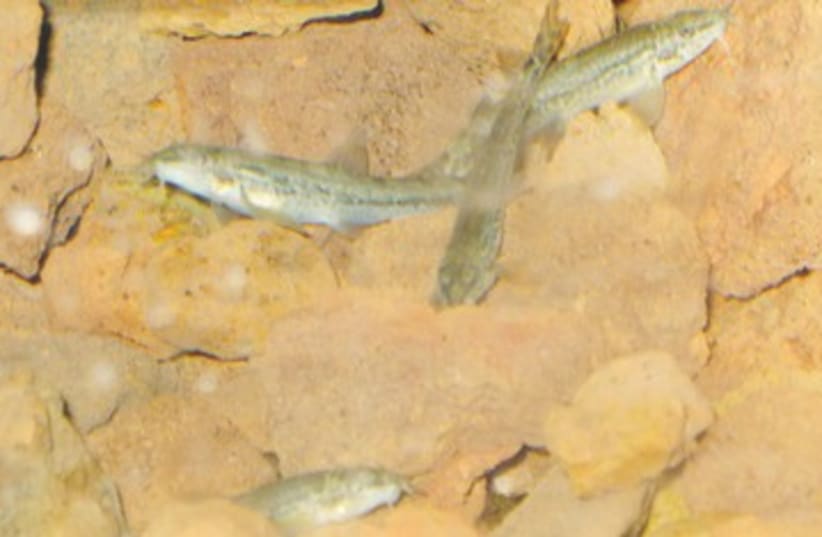In 2011, however, they found that the community had increased to about 200, so they decided to collect 20 of them to study and breed in captivity at a private farm in Rehovot.“In addition to breeding them we try to learn about their behavior,” she said, explaining that a camera monitors their every move, something which has alerted the scientists to the fish’s heightened morning activity, as opposed to evening.The Nemacheilus dori, who are the only fish in the stream and join some crabs, mollusks and worms, are very difficult to see as “their color is very similar to that of the ground and they like to be under stones,” Milstein explained. They also jet quite rapidly from one stone to another, she added.The natural spring at Ein Malkoach is very small – only generating 5 cubic meters of water per hour – so the INPA created two additional artificial ponds that are connected to the original by hand-dug streams, and fill with water through a pipe, parks officials explained.Now, the number of channels the fish can swim in has tripled, and the quantity of water flowing is 12 cubic meters per hour, according to Milstein.“We hope that the fish in this reserve will increase and they will reproduce and be stable and will give us enough time to reconstruct or rehabilitate other aquatic habitats, so that we can introduce the fish to other places,” she said. “It’s not that the fish are special – this is the only habitat that remains.”
Ecologists aim to save endangered fish
Known scientifically as Nemacheilus dori, the fish are found only in Israel and exclusively in waters of a tiny wetland reserve.

In 2011, however, they found that the community had increased to about 200, so they decided to collect 20 of them to study and breed in captivity at a private farm in Rehovot.“In addition to breeding them we try to learn about their behavior,” she said, explaining that a camera monitors their every move, something which has alerted the scientists to the fish’s heightened morning activity, as opposed to evening.The Nemacheilus dori, who are the only fish in the stream and join some crabs, mollusks and worms, are very difficult to see as “their color is very similar to that of the ground and they like to be under stones,” Milstein explained. They also jet quite rapidly from one stone to another, she added.The natural spring at Ein Malkoach is very small – only generating 5 cubic meters of water per hour – so the INPA created two additional artificial ponds that are connected to the original by hand-dug streams, and fill with water through a pipe, parks officials explained.Now, the number of channels the fish can swim in has tripled, and the quantity of water flowing is 12 cubic meters per hour, according to Milstein.“We hope that the fish in this reserve will increase and they will reproduce and be stable and will give us enough time to reconstruct or rehabilitate other aquatic habitats, so that we can introduce the fish to other places,” she said. “It’s not that the fish are special – this is the only habitat that remains.”